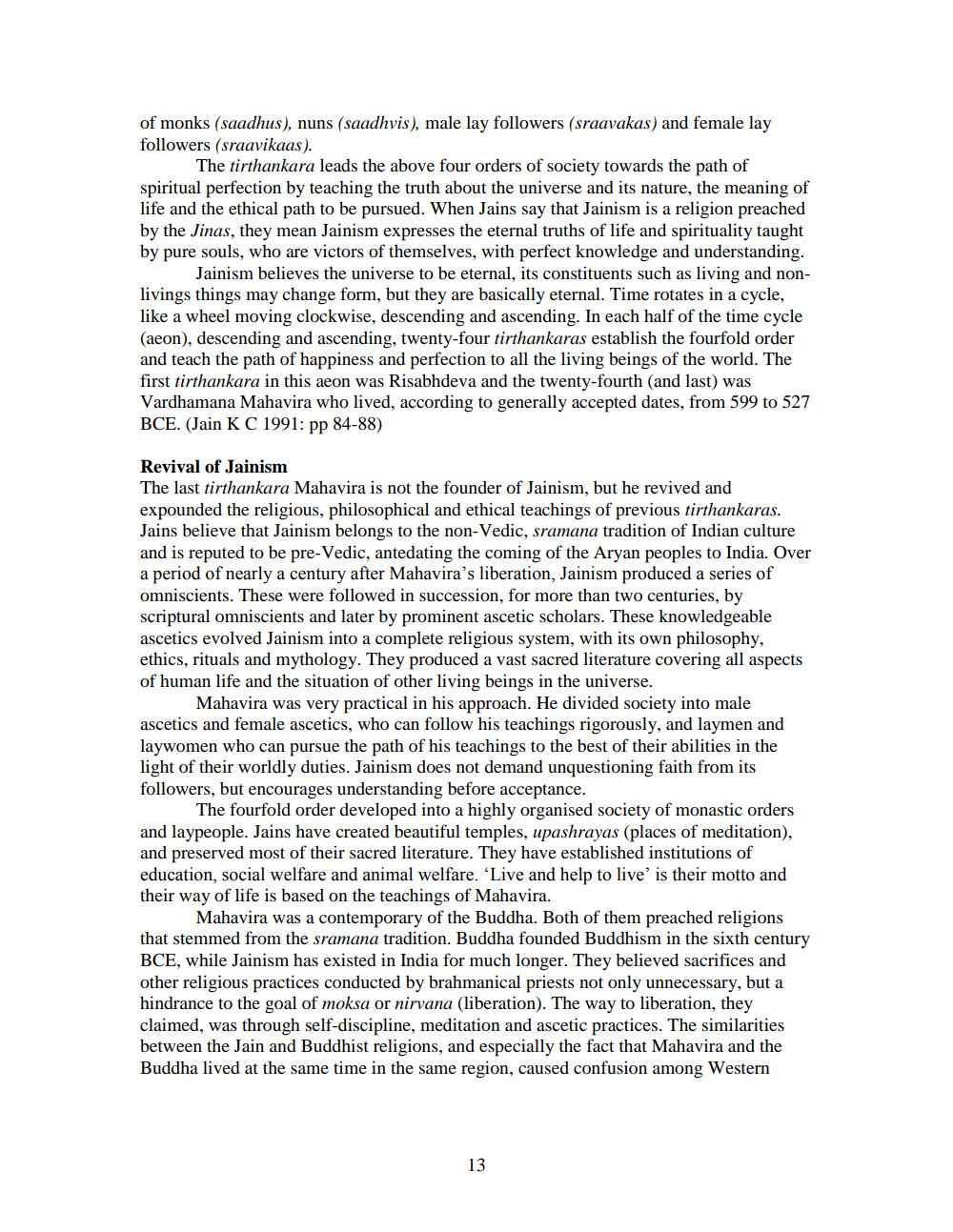________________
of monks (saadhus), nuns (saadhvis), male lay followers (sraavakas) and female lay followers (sraavikaas).
The tirthankara leads the above four orders of society towards the path of spiritual perfection by teaching the truth about the universe and its nature, the meaning of life and the ethical path to be pursued. When Jains say that Jainism is a religion preached by the Jinas, they mean Jainism expresses the eternal truths of life and spirituality taught by pure souls, who are victors of themselves, with perfect knowledge and understanding.
Jainism believes the universe to be eternal, its constituents such as living and nonlivings things may change form, but they are basically eternal. Time rotates in a cycle, like a wheel moving clockwise, descending and ascending. In each half of the time cycle (aeon), descending and ascending, twenty-four tirthankaras establish the fourfold order and teach the path of happiness and perfection to all the living beings of the world. The first tirthankara in this aeon was Risabhdeva and the twenty-fourth (and last) was Vardhamana Mahavira who lived, according to generally accepted dates, from 599 to 527 BCE. (Jain K C 1991: pp 84-88)
Revival of Jainism The last tirthankara Mahavira is not the founder of Jainism, but he revived and expounded the religious, philosophical and ethical teachings of previous tirthankaras. Jains believe that Jainism belongs to the non-Vedic, sramana tradition of Indian culture and is reputed to be pre-Vedic, antedating the coming of the Aryan peoples to India. Over a period of nearly a century after Mahavira's liberation, Jainism produced a series of omniscients. These were followed in succession, for more than two centuries, by scriptural omniscients and later by prominent ascetic scholars. These knowledgeable ascetics evolved Jainism into a complete religious system, with its own philosophy, ethics, rituals and mythology. They produced a vast sacred literature covering all aspects of human life and the situation of other living beings in the universe.
Mahavira was very practical in his approach. He divided society into male ascetics and female ascetics, who can follow his teachings rigorously, and laymen and laywomen who can pursue the path of his teachings to the best of their abilities in the light of their worldly duties. Jainism does not demand unquestioning faith from its followers, but encourages understanding before acceptance.
The fourfold order developed into a highly organised society of monastic orders and laypeople. Jains have created beautiful temples, upashrayas (places of meditation), and preserved most of their sacred literature. They have established institutions of education, social welfare and animal welfare. 'Live and help to live' is their motto and their way of life is based on the teachings of Mahavira.
Mahavira was a contemporary of the Buddha. Both of them preached religions that stemmed from the sramana tradition. Buddha founded Buddhism in the sixth century BCE, while Jainism has existed in India for much longer. They believed sacrifices and other religious practices conducted by brahmanical priests not only unnecessary, but a hindrance to the goal of moksa or nirvana (liberation). The way to liberation, they claimed, was through self-discipline, meditation and ascetic practices. The similarities between the Jain and Buddhist religions, and especially the fact that Mahavira and the Buddha lived at the same time in the same region, caused confusion among Western
13




